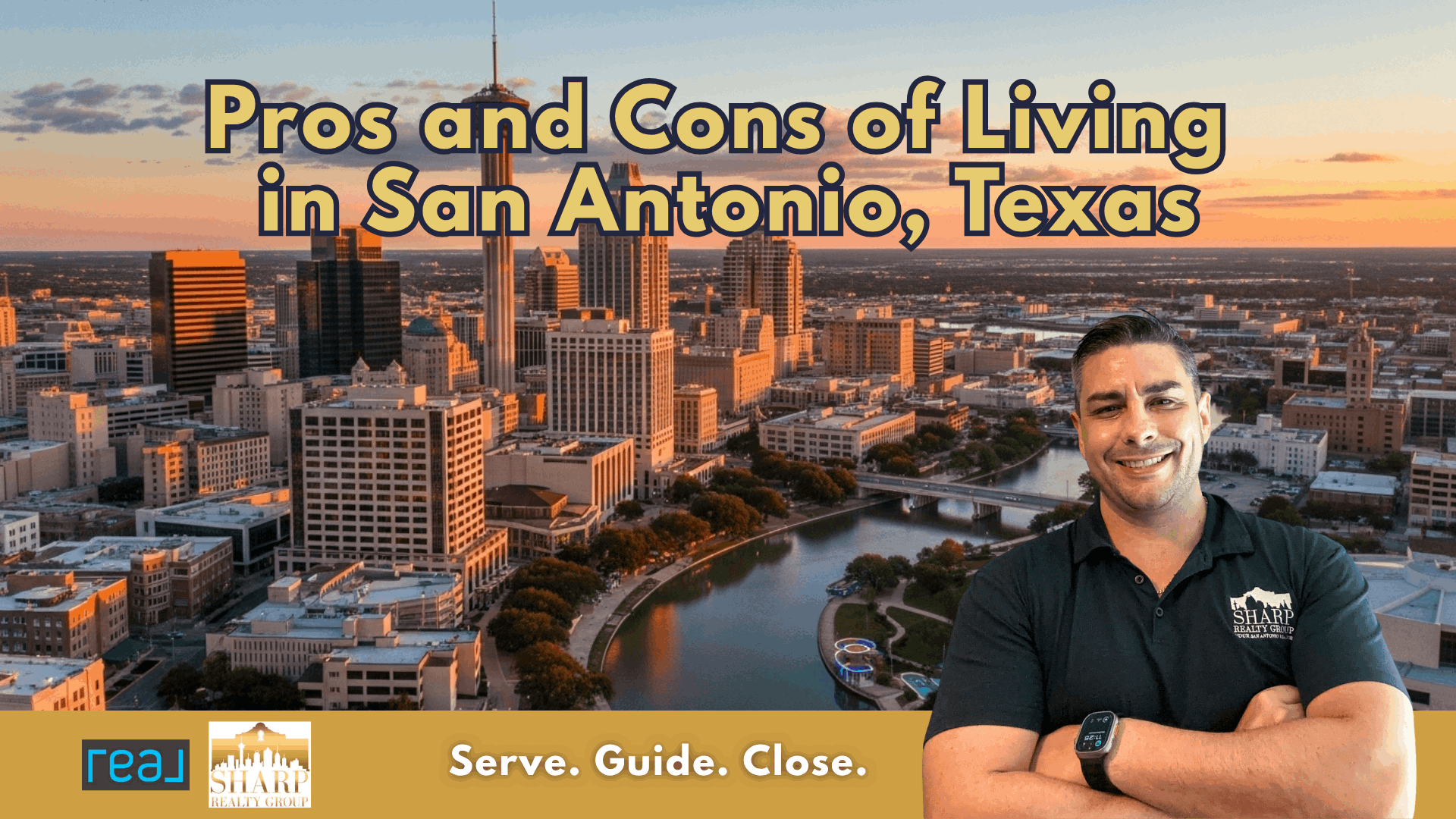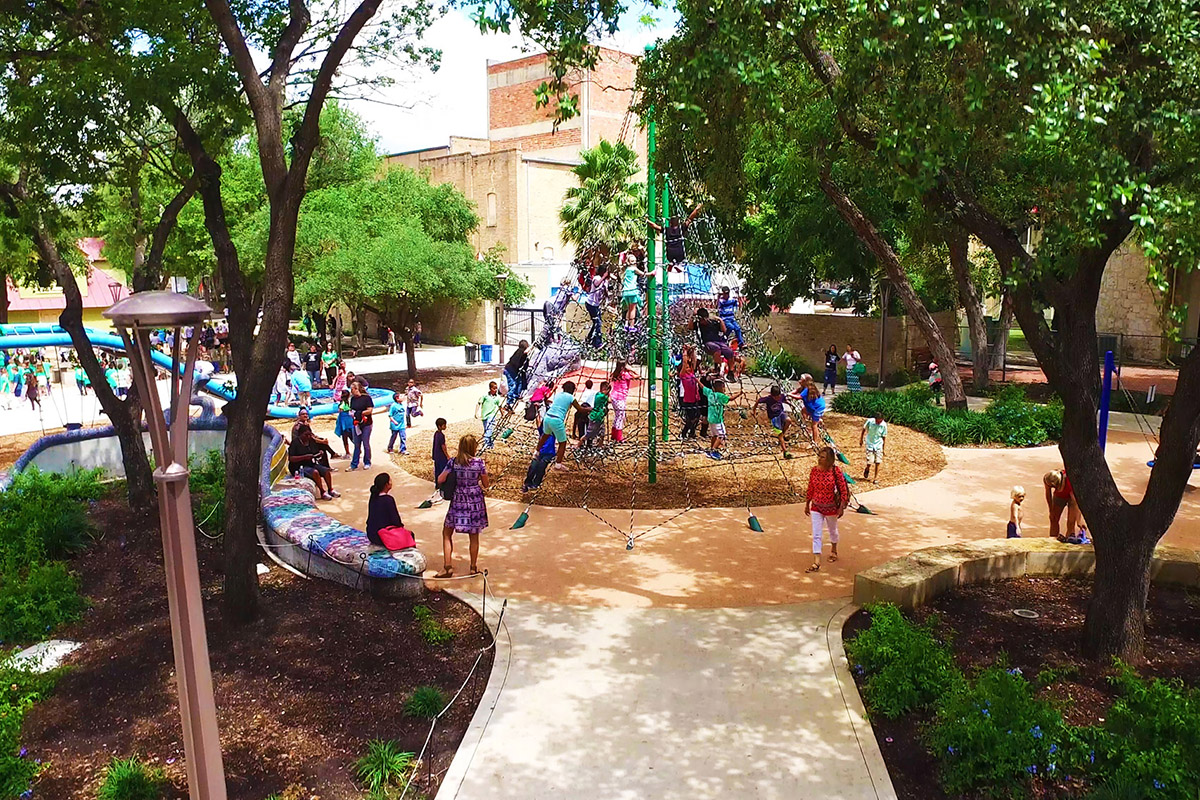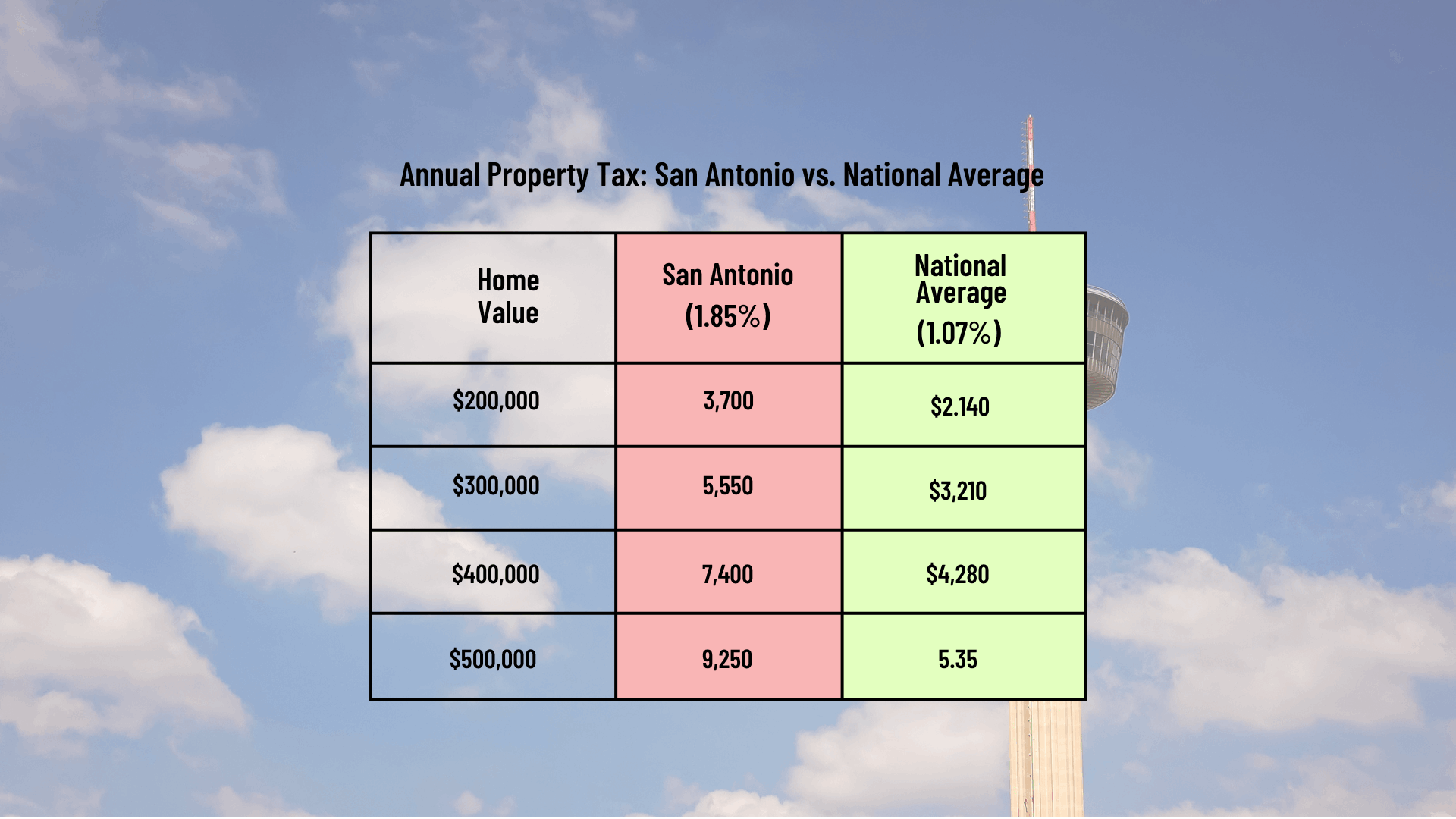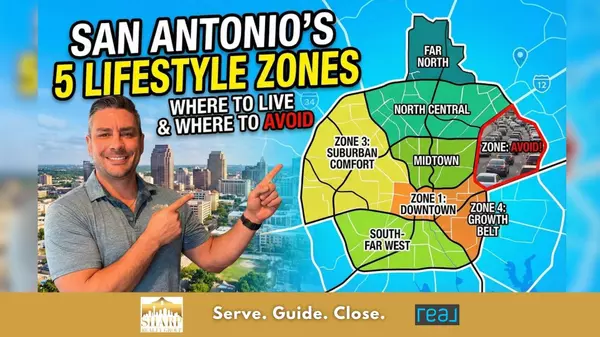Pros and Cons of Living in San Antonio

Hello! I'm Anthony Sharp, a San Antonio Realtor®, veteran, and proud Military City USA resident. As someone who's lived and worked here for years, I often get asked about the pros and cons of living in San Antonio.
In this post, I'll share an honest, first-person take on what it's really like here. Whether you're considering moving to San Antonio or just curious about life in this vibrant Texas city, I've got you covered.
San Antonio (aka Alamo City, River City, and Military City USA) is a fast-growing city with a rich history. People from all walks of life are moving here, drawn by the affordable living, warm climate, and welcoming community.
Of course, like any city, there are things you should know before moving. Things like scorching summers or bumper-to-bumper traffic that might not be in the brochures.
Let's break down the pros and cons so you can decide if this city is right for you.
Pro: Affordable Cost of Living and Housing
One of the biggest benefits of living in San Antonio is its affordability. Life here won't drain your wallet as quickly as other major cities.
The cost of living in San Antonio is about 8.7% below the national average. Everyday expenses like groceries, utilities, and healthcare are gentler on your budget here.
Housing Affordability is a Standout Advantage
The median home price in San Antonio is around $280,000. That's way below the national median (over $400K) and even other Texas cities.
By comparison, Austin's median is about $550,000! In practical terms, you get more house for your money here.
A three-bedroom home in a nice neighborhood might cost you what a small condo would in pricier cities. Even rent is reasonable – a one-bedroom apartment averages around $1,100–$1,200 per month.
Why is San Antonio So Affordable?
Texas has no state income tax, which instantly makes your take-home pay higher. You'll still pay sales and property taxes (more on those later), but keeping more of your paycheck is a major advantage.
Lower taxes and lower costs across the board give San Antonio a reputation as an affordable place to put down roots. Your money simply goes further here.
The Housing Market is Heating Up
Of course, "affordable" is relative. Home prices have been rising with demand.
San Antonio led U.S. cities in population gain around 2020 and added nearly 24,000 new residents from 2023 to 2024 alone. That growth is pushing prices up gradually.
Houses here often sell quickly, sometimes above asking price in hot areas. So be prepared to act fast if you're buying.
Bottom line: San Antonio's low cost of living and relatively cheap housing are huge pros. You can enjoy big-city amenities at a lower price tag.
Pro: Strong Job Market and Economic Growth
Another major pro is the diverse and growing job market. This isn't a one-industry town – our economy has fingers in many pies.
Employment Opportunities are Plentiful
San Antonio's unemployment rate hovers around or below the national average (recently about 3.8%). The city is a regional hub for healthcare, bioscience, and finance.
We're home to the South Texas Medical Center and companies like USAA, Rackspace, H-E-B, and Toyota's manufacturing plant. The tourism and hospitality sector is huge as well, with about 34 million visitors a year.
Extremely Military-Friendly
If you're in or associated with the military, you'll find San Antonio extremely accommodating. Joint Base San Antonio (JBSA) is the city's largest employer with over 80,000 jobs on base.
Many veterans (myself included) transition into civilian roles here thanks to the robust defense industry. It's no wonder we earned the nickname "Military City USA."
Growing Economy
San Antonio's economy is growing alongside its population. The city has consistently ranked among the fastest growing in the nation.
New companies are setting up shop, especially in cybersecurity and tech. It's exciting to see the evolution – new skyscrapers, expansions of our medical and tech centers, and a general buzz of progress.
A Minor Con: Lower Wages
To keep it real, wages in San Antonio are generally lower than in some other big cities. The median household income here is around $55,000, which lags behind the national median.
Many jobs are in retail, service, or tourism sectors that tend to pay less. However, our lower cost of living balances it out somewhat.
Bottom line: San Antonio offers a strong job market with diverse industries and lots of growth. Just be aware of the wage landscape.
🚨 San Antonio: The Pros and Cons You Wish You Knew Before Moving
Thinking about moving to San Antonio? Watch my latest video where I dive into everything you need to know before making the move— from affordable housing to dealing with the Texas heat. Get the inside scoop on the pros and cons of living in this vibrant city!
Watch the Full Video Guide →Pro: Military-Friendly City and Neighborhoods
As a veteran, I can't overstate this – San Antonio is extremely military-friendly. The city has a long military history and a large active-duty and veteran population.
Military-Friendly Neighborhoods
If you're relocating through the military, you'll find the transition easier than most places. There are military-friendly neighborhoods near each major installation.
Around Fort Sam Houston (central-east side), areas like Alamo Heights, Terrell Hills, and Oak Park have lots of military families. Near Lackland AFB (west side), communities like Westover Hills and Alamo Ranch are popular with Air Force families.
By Randolph AFB (northeast), towns like Universal City, Schertz, Cibolo, and Live Oak are full of military folks. These areas understand the transient military lifestyle.
Great Support Systems
San Antonio offers one of the nation's largest VA hospitals and numerous clinics. There are veteran service organizations, networking groups, and job fairs specifically for transitioning service members.
Another plus: no state income tax on military retirement pay in Texas. This is huge for retired military settling down here.
Bottom line: If you're in the military or a veteran, San Antonio is a great place to live with friendly neighborhoods and ample support services.
Pro: Culture, Food, and Community Spirit
San Antonio's community and culture are big reasons people fall in love with this city. There's a rich tapestry of history and heritage here.
The Food Scene is Incredible
Let's start with the food – oh, the food! San Antonio is a foodie haven, especially if you love Tex-Mex and Mexican cuisine.
We're talking about some of the best tacos you'll ever eat, available on practically every corner. UNESCO designated San Antonio a Creative City of Gastronomy in 2017.
From breakfast tacos and barbacoa to brisket and pan dulce, the food scene is incredible. Beyond Tex-Mex, the city's diversity means you can find authentic eateries for just about any cuisine.
Plenty to Do and See
The famous River Walk is the heart of downtown – a miles-long riverside promenade lined with restaurants, shops, and music. Over 14 million people visit annually.
We also have the Alamo and four other Spanish colonial missions (UNESCO World Heritage Site). Families enjoy attractions like SeaWorld and Six Flags Fiesta Texas.
Outdoors enthusiasts can explore the nearby Texas Hill Country for hiking and wineries, or our extensive city park system.
Amazing Festivals and Events
Perhaps my favorite aspect is our festivals and community spirit. This city knows how to throw a party.
The biggest event is Fiesta San Antonio – a citywide, 10-day celebration each spring with parades, music, food fairs, and more. It's an absolute blast and showcases our diversity and pride.
Other events include Cinco de Mayo celebrations, Día de los Muertos, the Texas Folklife Festival, and the San Antonio Stock Show & Rodeo.
Friendly, Small-Town Vibe
Despite being the 7th largest city in the U.S., San Antonio has a friendly, small-town vibe. Folks here are generally warm, polite, and willing to help a stranger.
We're more laid-back than bustling Dallas or trendy Austin. Southern hospitality is alive and well – expect to be called "sir" or "ma'am."
Bottom line: San Antonio offers a rich cultural experience, an amazing food scene, and genuine community spirit. It's a big city with a surprisingly homey feel.
Pro: Family-Friendly Lifestyle

If you're moving with kids or planning to start a family, San Antonio is an excellent choice. One of the great benefits is how family-friendly it is.
Great Neighborhoods for Families
San Antonio is sprawling and offers everything from urban living to suburban master-planned communities. For families, the north side and northwest tend to be popular.
Stone Oak is a large master-planned community known for excellent schools, parks, and low crime. It's part of the highly-rated North East Independent School District.
Alamo Heights is an older, established suburb with its own top-notch school district and a close-knit community feel. It's a bit pricier but offers a lovely environment for raising kids.
Helotes is a semi-rural suburb where you can get a larger yard and still have access to city amenities. Schertz/Cibolo in the northeast offers affordable, newer homes popular with military families.
Abundance of Parks and Activities
Family life here is enriched by amenities geared toward children and parents. We have an abundance of parks and playgrounds in every quadrant of the city.
Notable ones include Brackenridge Park (near the zoo), Hemisfair Park downtown (with splash pads), Phil Hardberger Park (with nature trails), and Pearsall Park (with giant slides and a skate park).
On weekends, you'll see families at Little League games, enjoying the San Antonio Zoo, or tubing down the Guadalupe River.
Solid School Options
San Antonio has good public school districts in many areas. Northside ISD, North East ISD, and Alamo Heights ISD are among the highly rated ones.
There are also lots of charter schools and private schools if you prefer. Higher education is represented with UTSA (University of Texas at San Antonio), Trinity University, and others.
Bottom line: For families, San Antonio offers affordable homes in family-friendly neighborhoods, reputable schools, loads of kid-friendly activities, and a welcoming environment.
Con: Scorching Summers and Humidity
Alright, time to dive into some downsides. I can't sugarcoat this one: San Antonio heat and humidity can be brutal.
If you're moving here from a cooler climate, the summers might shock your system. We have a humid subtropical climate – long, hot, sticky summers and short, mild winters.
The Summer Heat is Intense
From about May through September, San Antonio is HOT. Daytime high temperatures regularly hit the mid to upper-90s °F.
We often see stretches over 100°F in July and August. On top of that, it's humid – not Gulf Coast swampy like Houston, but enough to make the heat feel oppressive.
In peak summer (June-August), it's not just the midday heat. Nights often stay in the 80s, offering little relief. Imagine stepping outside at 9 PM and still sweating.
Your A/C Bill Will Go Up
The humidity can push the heat index well over 100°F. Sun intensity is also high – the UV index is frequently extreme.
Air conditioning isn't a luxury here, it's a lifeline. If you move here, budget for higher electricity costs during summer months because you will run the AC day and night.
Adjusting Your Lifestyle
In July/August, doing anything outside after 11am is tough. Mid-day hikes or jogs? Dangerous without hydration.
A lot of us adjust by doing things either early in the morning or in the evening during summer. We basically hibernate in air-conditioned comfort between 12-5pm.
Weather-Related Issues
With heat often comes drought. Some summers we'll go weeks without significant rain, and watering restrictions kick in.
When we do get rain, it can come as heavy thunderstorms. Flash flooding is something San Antonio is known for – our soil doesn't absorb water well, so downpours can cause sudden street flooding.
Cedar Fever and Allergies
Humidity also contributes to another con: allergies and air quality. San Antonio is famous for "Cedar Fever" – an allergy season in winter triggered by mountain cedar pollen.
Each year around December-January, cedar trees release massive amounts of pollen. San Antonio consistently ranks among the top worst cities in the U.S. for allergies.
Spring brings oak pollen too, so from late December through April, there's something yellow coating your car.
The Silver Lining
The good news: winters are very mild (a pro, really). From late October through March, the weather is quite pleasant – cool mornings, highs in the 60s or 70s °F most days.
Bottom line: The extreme summer climate is one of the biggest cons of living here. You'll need to adjust your lifestyle to stay cool and safe.
Con: Traffic and Car Dependence
Another common complaint is San Antonio's traffic and transportation setup. While we're not Los Angeles in terms of gridlock, traffic here can be frustrating.
Essentially, San Antonio is a driving town – you'll likely need a car to get around comfortably.
Traffic Can Be Frustrating
The metro area is spread out geographically. Over the past decade, the population boom has meant more cars on the road.
At rush hour (roughly 7:00-9:00am and 4:30-6:30pm on weekdays), expect slowdowns on major routes like Loop 1604, Loop 410, I-35, and I-10.
Certain stretches, like I-35 between SA and Austin, can be bumper-to-bumper on weekends too.
Aggressive Driving Habits
More than the volume of cars, I'd argue the drivers themselves contribute to the problem. For whatever reason, driving habits here are...not the best.
People joke about the "San Antonio slide" – cutting across multiple lanes last-minute. It's common to see red-light running, lane diving, and tailgating.
One local article quipped that driving on SA highways is like a Mad Max movie, and some days I believe it! Defensive driving is a must.
Lacking Public Transportation
To be frank, it's lacking. San Antonio has a bus system (VIA Metropolitan Transit) and that's about it.
There's no commuter rail or subway, and the city's spread-out nature makes it hard to serve effectively with buses. Most people in the suburbs find the bus routes inconvenient or too slow.
The result? Less than 3% of residents use public transit regularly – everyone else drives. Living in San Antonio means owning a car in almost all cases.
Urban Sprawl Issues
Car dependence also ties into urban sprawl. If you hate long commutes or having to drive 20-30 minutes to get places, parts of SA might bug you.
However, you can choose to live near where you work and mitigate that. But if you end up working across town, you'll likely face a 30+ minute commute each way.
Walkability is limited mostly to central areas (downtown, Pearl, Southtown). In suburbs, you'll be driving to the grocery store, school, etc.
Safety Concerns
Traffic accidents are fairly common because of the driving styles. Intersections here can be dangerous.
Also, car thefts and break-ins happen. Don't leave valuables in your car and consider theft-deterrent devices if you have a commonly stolen model.
Bottom line: Transportation is a notable con. Expect to rely on your car for virtually everything, and be prepared for busy highways and wild driving behavior.
Con: Higher Property Taxes

Remember how I said "no state income tax" is a huge pro? It is – but Texas finds its revenue elsewhere, primarily through property taxes.
This is a financial con to be aware of, especially if you plan on buying a home.
Among the Highest in the Nation
San Antonio ranks in the top 5 large U.S. cities for property tax rate, with an effective rate around 1.85% of your home's value. That's nearly double the national average rate.
In practical terms, on a $300,000 home you might pay around $5,500-$6,000 per year in property taxes. It's a hefty bill that catches some newcomers off guard.
Why So High?
Texas has no income tax, so local governments rely heavily on property tax and sales tax. In Bexar County, the property tax supports everything from public schools to city services.
We do get homestead exemptions for primary residences which knock a bit off the taxable value. Additional exemptions exist for veterans and seniors – definitely take advantage if you qualify.
But even after exemptions, it's a significant yearly expense to budget for as a homeowner.
Other Costs to Consider
There's also a ~8.25% sales tax on purchases. Utilities can be a bit high, mainly due to summer electric bills when the AC is blasting.
Water isn't super cheap either – we're in a semi-arid region, and overuse can get pricey. Home insurance can be higher here too, partly because we get occasional severe weather (hail storms are notorious).
Bottom line: While San Antonio is affordable in many ways, the property tax burden is a notable con for homeowners. Plan for it so it doesn't catch you off guard.
Con: Urban Issues – Crime, Trash, and Construction
Like any large city, San Antonio has its share of urban challenges. While I find it overall a safe and pleasant place, these issues deserve mention.
Crime Rates
San Antonio's crime rates are a bit higher than national averages. The city proper has some neighborhoods with high crime (generally on the East and West sides).
Most of our crime is property crime (vehicle break-ins, burglaries) and it's concentrated in certain pockets. Many suburbs and North Side areas are quite safe.
If you move here, research the area. There are lots of safe neighborhoods (Alamo Heights, Stone Oak, many others). But there are parts of town to avoid at night, as in any big city.
Litter and Trash Issues
This is a minor con, but noticeable. Some parts of the city struggle with litter and dumping.
You'll see highway shoulders with trash or empty lots where people illegally dump old mattresses or tires. We even got labeled one of the "dirtiest cities" in the U.S. by a recent survey.
In daily life, the main tourist areas and well-kept neighborhoods are clean and beautiful (the River Walk, Pearl District). But drive outside those areas and you might notice more roadside trash.
Many locals organize volunteer cleanups, and there's strong civic pride working to improve this.
Constant Construction
San Antonio is booming, and the flip side is constant construction. Roads are being widened, new overpasses built, new subdivisions going up everywhere.
If you live near a developing area, you'll probably hear construction noise or deal with detours. Some locals joke: "San Antonio feels like it's always under construction."
Also related to growth: locals' attitude towards newcomers can occasionally be prickly. There's a bit of "don't turn our city into California" sentiment.
Honestly, the vast majority of San Antonians are friendly and welcoming. But in any fast-growing city, that tension can exist.
School Quality Varies
Public education quality varies across the city. Some inner-city schools do struggle.
If you have kids, you'll likely gravitate to the better districts anyway. Just something to keep in mind if you're planning to live in a cheaper area.
Bottom line: San Antonio faces some big-city issues like crime in pockets, litter, and growing pains. These are generally manageable with awareness and choosing the right location.
FAQ: Common Questions
Is San Antonio a good place to live?
Yes – San Antonio is a great place to live for many people. It offers an affordable cost of living, a warm climate with mild winters, and a rich cultural scene.
Locals are friendly, there's a strong sense of community, and there are plenty of things to do. Like any city, it has drawbacks (hot summers, traffic), but overall San Antonio provides a high quality of life.
The pros – affordability, culture, community – make it a good place to live for a wide range of folks.
What are the negatives of living in San Antonio?
The main cons include:
- Oppressive summer heat and humidity
- Traffic and car dependency (spread out city, congested highways, lack of public transit)
- Higher property crime in certain areas
- Litter/trash issues in some public areas
- Constant construction due to rapid growth
- Notorious cedar pollen season for allergy sufferers
These negatives don't usually outweigh the positives for most people, but they're important to know about.
Why is San Antonio so cheap?
San Antonio's affordability comes from several factors:
- Housing prices and rents are significantly lower than in coastal cities or even Austin and Dallas
- Texas has no state income tax
- Total cost of living expenses are about 8-9% lower than the U.S. average
- Large supply of land keeps housing costs down
Your dollar goes further here – you can get a nice home and maintain a comfortable lifestyle on a moderate income.
Why are people moving to San Antonio?
San Antonio is consistently among the fastest-growing cities in the U.S. People are moving here for:
- Affordability (housing and living costs are lower)
- Job opportunities (diverse economy with jobs in military, healthcare, tech)
- Lifestyle (warm weather, friendly culture, lots of attractions)
- No state income tax (attracts both companies and remote workers)
- Family-friendly environment (good schools, safe neighborhoods, community-oriented)
It's a place where you can settle down, find good work, enjoy rich culture, and not break the bank.
What are the best neighborhoods for families?
Top family-friendly neighborhoods include:
Stone Oak (North Central) – Safe master-planned community with excellent schools, parks, and newer homes.
Alamo Heights (Near Central) – Established, upscale neighborhood with top school district and small-town feel.
Helotes (Northwest edge) – Quieter, semi-rural vibe with spacious yards and Hill Country scenery.
Schertz/Cibolo (Northeast) – Affordable homes and highly-rated schools, popular with military families.
Alamo Ranch (Far West Side) – Newer large community with shopping, parks, and schools.
Generally, look to the north/northwest and northeast parts of town for a concentration of great family options.
Conclusion
San Antonio is a city of balance – for every con, there's a pro that often outweighs it. After weighing these pros and cons, I can say I'm happy to call this city home.
Sure, I gripe about the summer heat or grumble in traffic now and then. But when I'm sitting on the patio of my favorite taco spot, enjoying a mild evening in February, or chatting with friendly neighbors at a Fiesta event, I'm reminded of why I love it here.
If you're considering moving to San Antonio, take these insights as things to know before you arrive. Every city has its quirks, and San Antonio is no different.
But with strong job growth, affordable living, rich culture, and that welcoming Texas hospitality, it's no surprise so many people are choosing to make San Antonio their new home.
Feel free to reach out if you have questions – as a local Realtor® and a neighbor, I'm always happy to help. Good luck with your decision, and maybe soon I'll be saying to you: "Welcome to San Antonio!"
Categories
Recent Posts













